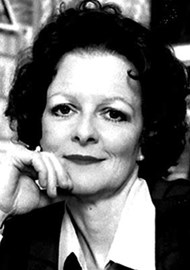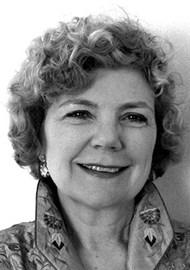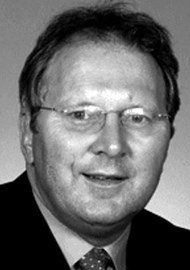The triennial BACO is always a feast of academic and social activity – and BACO 2015 promises to be as busy as ever. We hear from three of the key British speakers who are making big contributions to this year’s conference.
Top tips to treat the unexplained, inexplicable and the heart sink
In today’s busy world everyone welcomed the streamlining of BACO to three days. This does mean, however, that the breakfast sessions which used to be rather informal get-togethers, have become a more substantial part of the programme. On Friday 10 July, the British Laryngological Association will lure people out of bed with our breakfast session, ‘My top tips to treat the unexplained, inexplicable and the heart sink’.
Top of the bill is Julia Selby on the most knotty of airway problems – inducible laryngological obstructions and paradoxical movements. She is followed by a preeminent American guest, Mike Benninger, who shares his tips for spasmodic dysphonia. I bring up the rear with catarrh and globus, and welcome the chance to reference our ongoing trial of proton pump inhibitor in persistent up symptoms – the National TOPPITS study (www.toppits.co.uk).
“I bring up the rear with catarrh and globus, and welcome the chance to reference our ongoing trial...”
The top tips format conceived by Chairman Declan Costello – himself a skilled classical singer – should be just about manageable, even for those who have celebrated all too well at the Maritime Museum on the previous night.
Later on Friday morning I am indeed a privileged chair as the BLA hosts a trio of performing voice giants from three continents. Markus Hess from Hamburg has a major interest in assessment of the performer’s voice. Mike Benninger has long had a major interest in the performing voice ever since his days in Detroit, the home of Motown. Now based in Cleveland, Ohio, his voice empire is literally boundless and he will share his experience of a unique telemedicine voice clinic.
Finally Professor Paul Carding who now heads a major speech and language programme on three city campuses in eastern Australia will talk about that near universal issue – performance anxiety in a talk titled, ‘From the Royal Shakespeare Company to the shaky registrar’.
Janet A Wilson
KEY DATES
10 July, 08.00: S34 Symposium – BLA Declan Costello, Julia Selby, Mike Benninger, Janet Wilson
10 July, 11.45: C35 Conference – British Laryngology Association Janet Wilson, Markus Hess, Mike Benninger, Paul Carding
Sinonasal malignancy and the anterior skull base
Tumours affecting the nose, paranasal sinuses and adjacent skull base are fortunately rare. However, they pose significant problems of management due to their late presentation and juxtaposition to important anatomical structures such as the eye and the brain [1]. Endoscopic techniques originally designed for chronic rhinosinusitis were progressively extended to the surgical interfaces with the repair of CSF leaks, orbital decompression and experience with sphenopalatine ligation and exploration of the ptergopalatine region leading to the treatment of a wide range of benign tumours.
It was therefore a natural evolution that endonasal endoscopic techniques would be increasingly applied to the curative excision of sinonasal malignancy, offering potentially similar scales of resection but with reduced morbidity. This in turn has led to a new discipline of rhino-neuro-endoscopy (or permutations thereof) and a burgeoning of skull base meetings throughout the world. BACO has been at the forefront of general ENT meetings offering exposure to this area and 2015 will be no exception with keynote lectures and interactive anterior skull base sessions with some of the leading exponents of the techniques.
“The importance of a multidisciplinary approach is perhaps more important here than in any other area of head and neck.”
The rarity of these tumours and the diversity of the histopathology have hitherto made it difficult for any centre to accrue large series of endoscopically-treated patients suitable for robust statistical analysis but this has changed in recent years with international consensus panels [2] encouraging prospective collection of data and the publication of large longitudinal cohorts [3, 4].
Of course, not all sinonasal malignancy can be managed by endoscopic techniques alone and there is still an important place for classical craniofacial surgery, maxillectomy or combinations of these approaches when adhering to the oncologic principles of intention to cure, especially in countries where presentation of disease is late and infrastructure limited.
Irrespective of the approach, the natural history of these tumours necessitates long-term follow-up.
The importance of a multidisciplinary approach is perhaps more important here than in any other area of head and neck, bringing together the talents of pathologist, radiologist, medical oncologist and specialists in rehabilitation.
Whether new molecular and gene therapy or monoclonal antibodies will provide the answer in the future remains to be seen, but for now the management of sinonasal malignancy is one of the most interesting and challenging areas.
Valerie J Lund
References
1. Lund VJ, Howard D, Wei W. Tumors of the nose, sinuses and nasopharynx. 2014; Thieme.
2. Lund VJ, Stammberger H, Nicolai P, et al. European Position Paper on Endoscopic Management of the Nose, Paranasal Sinuses and Skull Base. Rhinology 2010;S22:1-144.
3. Nicolai P, Battaglia P, Bignami M, et al. Endoscopic surgery for malignant tumors of the sinonasal tract and adjacent skull base: A ten year experience. Am J Rhinol 2008;22:308-31.
4. Lund VJ, Chisholm EJ, Howard DJ, Wei WI. Sinonasal melanoma: a review of 115 cases assessing outcomes of surgery, postoperative radiotherapy and endoscopic resection.Rhinology 2012;50:203-10.
KEY DATES
8 July, 11.45: C1 Conference - Rhinology / Skullbase. Valerie Lund, Piero Nicolai, Peter Clarke, Manuel Sprekelsen, Peter Andrews, Mark Jorrissen
8 July, 14.15: K2 Keynote 2 Piero Nicolai
BACO 2015 Head and Neck programme
I am delighted to be able to write and support a short piece regarding the upcoming BACO conference in Liverpool in July this year. This is my ninth BACO since first attending Glasgow back in 1987, and since then the conference has significantly expanded. There have been many notable advances in head and neck surgery during this time, but one of the most important I think for us as a specialty is the expansion into endocrine surgery, and the developments of the sub-specialty interests in not only thyroid and parathyroid surgery but also pituitary surgery.
At this year’s conference there are dedicated sessions within the head and neck section (organised by Ricard Simo) to include topics of complications in thyroid surgery and how to avoid them, medico-legal aspects of thyroid and parathyroid surgery, followed by another session of parathyroid surgery organised by James England. This all takes place on 8 July and the following day there is a cadaveric dissection session on thyroid and parathyroid surgery.
“The publication of surgical outcomes is very topical at the moment and depending on what your view is on this, one thing for certain is that they are here to stay.”
The publication of surgical outcomes is very topical at the moment and depending on what your view is on this, one thing for certain is that they are here to stay. The RSM session on Friday 10 July is on surgical outcomes with short presentations on rhinology, otology and thyroid surgery, and this follows a key note from Mr Martin Elliott who is Consultant Cardiothoracic Surgeon at Great Ormond Street.
Personally, I am delighted to participate in all these sessions and having looked at the head and neck programme, all the sessions appear to be well structured and will fit nicely into the overall well-thought-out BACO programme.
Finally, July will see the launch of the new, eighth edition of Scott Brown and it is a privilege to have been involved with Ray Clarke as co-editor of this book. I thank all the authors for their significant contributions and look forward to welcoming you all to Liverpool then.
John C Watkinson
KEY DATES
8 July, 11.45: C3 Conference - Head & Neck / Laryngology Ricard Simo, Antonio Sitges-Serra, Barney Harrison, Conrad Timon, John Watkinson
8 July, 16.45: I3 Instructional - Head & Neck / Laryngology James England, Shahed Quraishi, Antonio Sitges-Serra, Neil Tolley
9 July, 15.15: D6 Cadaveric Dissection - Head & Neck / Laryngology John Watkinson, Antonio Sitges-Serra, Ricard Simo, Conrad Timon
10 July, 10.00: S20 Symposium - Royal Society of Medicine






